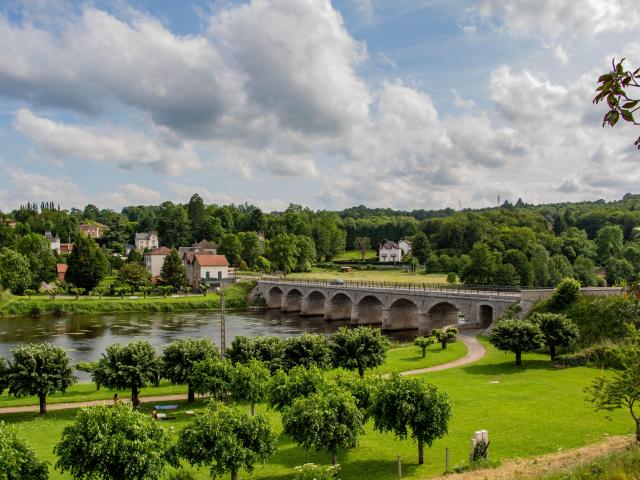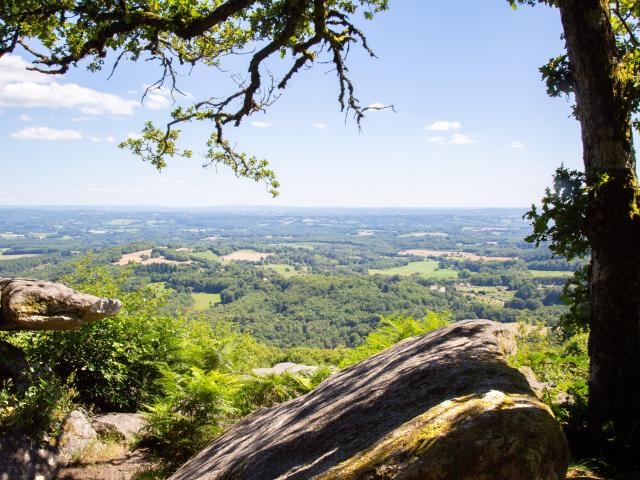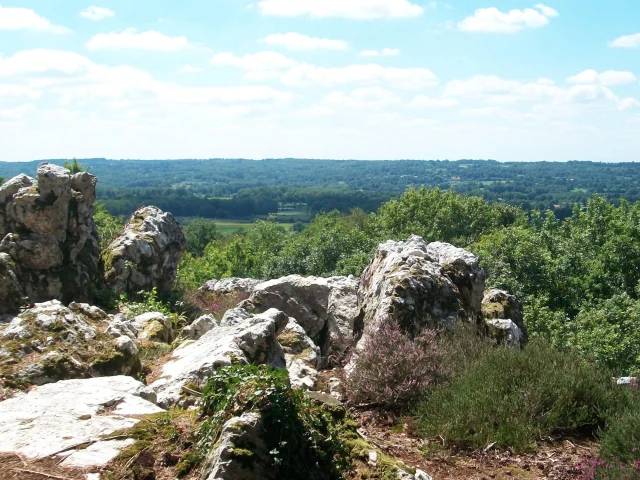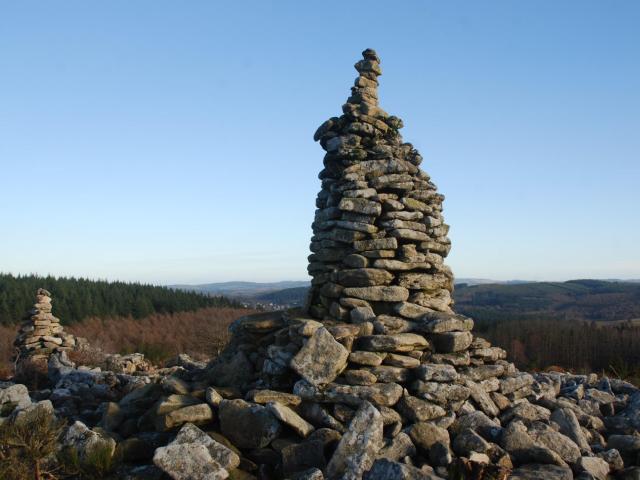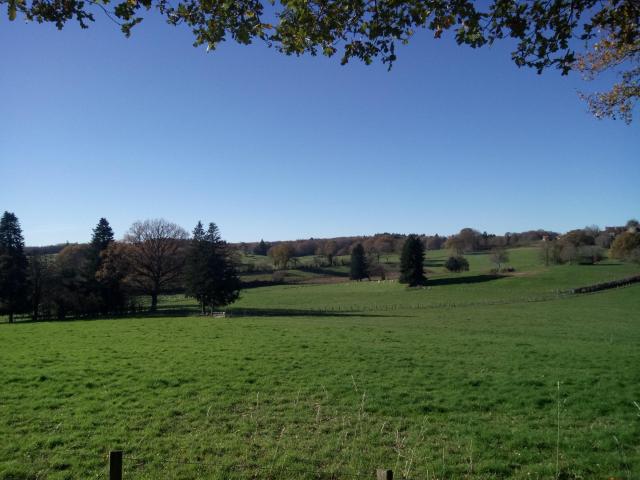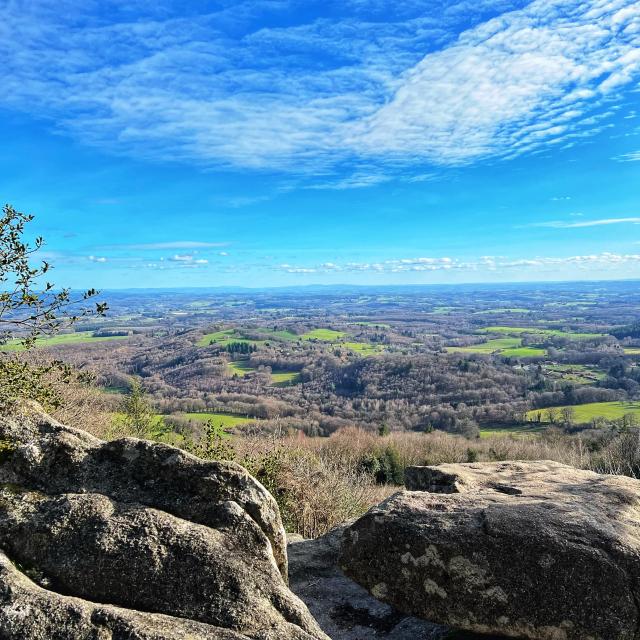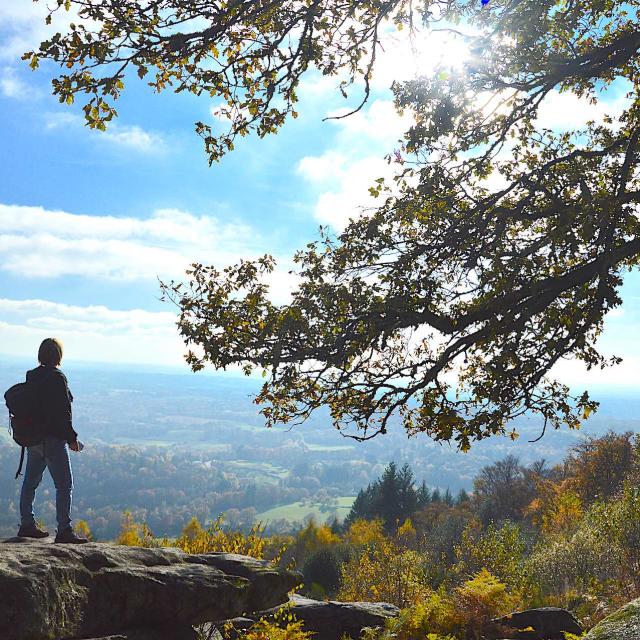 Le Mont Gargan
Le Mont GarganThe Mont Gargan
One of the highest points in Haute-VienneRising to 731m, the Mont Gargan is a listed natural monument. It is also a site of landscape interest in the Parc Naturel Régional de Millevaches en Limousin.
From the summit, you can enjoy a vast panorama. Two orientation tables make it easy to find your bearings and identify distant summits.
A 2.2 km trail takes you on a journey of discovery, starting at the beech tree alley. The remains of the Notre-Dame-de-Bon- Secours chapel, the devotional fountain, the memorial stone commemorating acts of the Resistance and the heather moorlands, a vestige of the local agropastoral landscape, are the highlights of the circuit.


